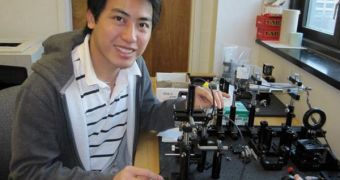As talk of setting up a worldwide asteroid-deflection system is intensifying, experts are continuing to present evidence of why such a defense network is needed. Recently, scientists highlighted the effects that a massive asteroid impact would have on our planet.
The experts were talking about a K-T extinction event-type of space rock, such as the one that slammed into Earth more than 65 million years ago. The impact is known for having wiped out a huge portion of all living species, and for brining an end to the age of dinosaurs.
It is estimated that the Cretaceous-Tertiary (K-T) event involved a 25-million-ton space impactor that hit in the Chicxulub Peninsula in Mexico. The impact was so strong that it changed our planet for thousands to millions of years afterwards.
These issues were again brought into the spotlight by speculation spreading through the media that the asteroid Apophis has a chance of slamming into Earth. The space rock is scheduled to make two close passes by the planet in 2029 and 2036.
Indeed, if Apophis were to hit, things would be very bleak. The asteroid weighs in excess of 25 million tons, is about 90 stories high, and has a diameter of 1,100 feet (~360 meters), Science Daily reports.
“A collision with an object of this size traveling at an estimated 30,000 to 40,000 mile per hour would be catastrophic,” explains associate professor of physics Gregory L. Matloff, who is based at the New York City College of Technology (City Tech).
The expert, who is also a researcher at the American space agency has only two possible solutions for avoiding disaster – “either destroy the object or alter its trajectory,” he explains. In his experience, deflecting trajectories is the best way to go.
“We don't always know this far ahead of time that they're coming, but an Apophis impact is very unlikely,” the expert says, adding that a potential strike would have the force of 68,000 Hiroshima bombs.
But an asteroid defense network would not only protect against large impactors such as Apophis, but also against smaller asteroids and meteorites, collectively called near-Earth objects (NEO).
These space rocks are small, cold and dark, and they are a pain to identify. Yet, they may slam into our planet at any time. At recent workshops, astronomers have determined that a simple, cheap and easy-to-build infrared telescope array would be sufficient for detecting the most dangerous NEO out there.
As for Apophis, “a debate is underway between American and Russian space agencies regarding [the rock]. The Russians believe that we should schedule a mission to this object probably before the first bypass because Earth-produced gravitational effects during that initial pass could conceivably alter the trajectory and properties of the object,” Matloff says.
“On the other hand, Americans generally believe that while an Apophis impact is very unlikely on either pass, we should conduct experiments on an asteroid that runs no risk of ever threatening our home planet,” he concludes.

 14 DAY TRIAL //
14 DAY TRIAL //